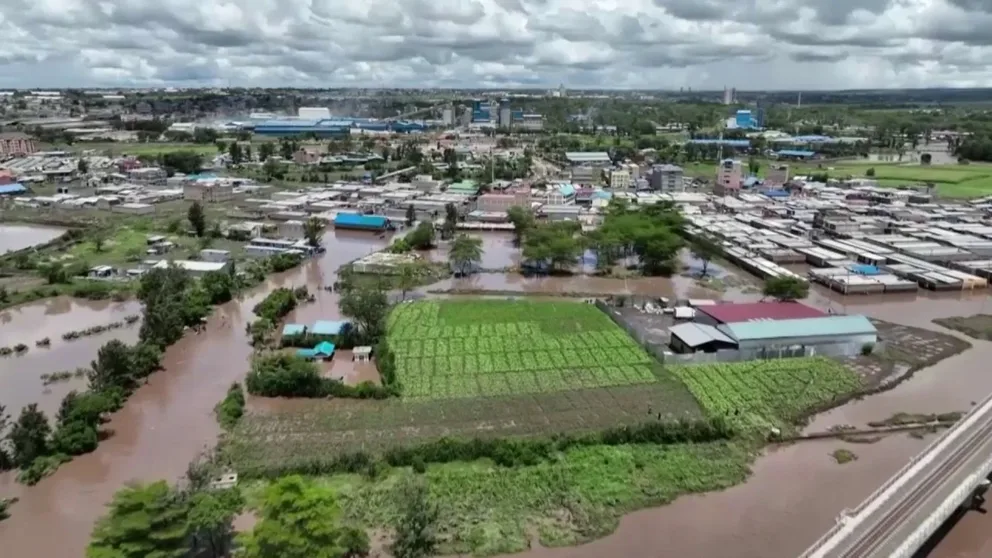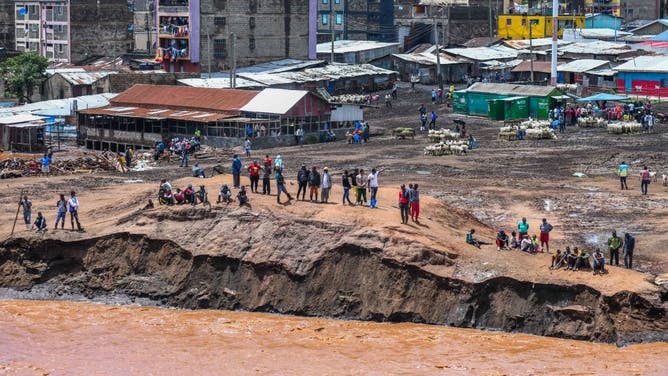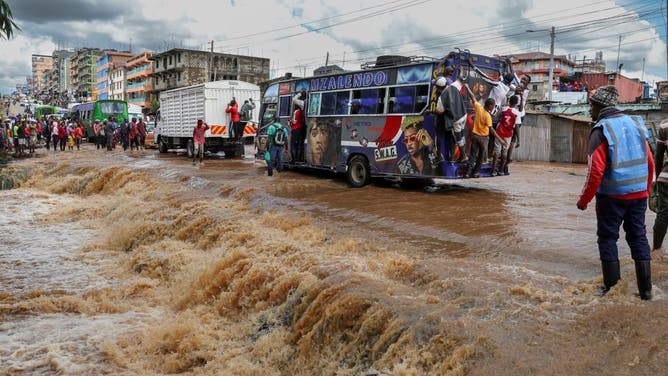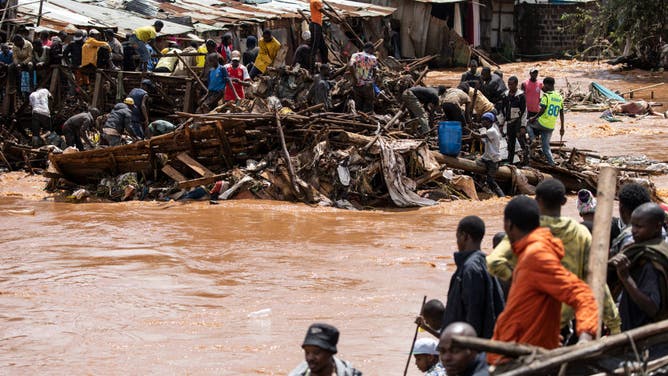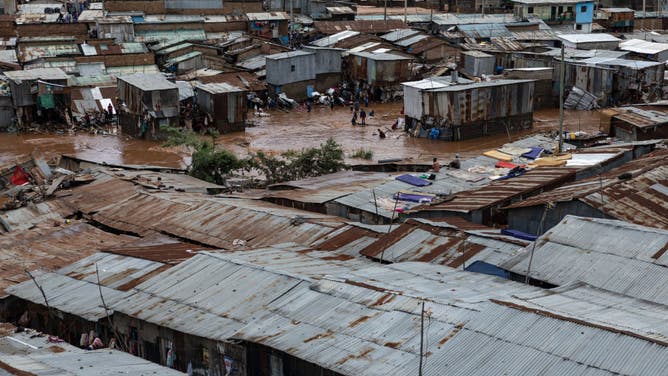Dozens dead in Kenya after relentless rains cause flash flooding
The region’s spring rainy season is known as "masika," while a shorter period of precipitation that happens in November and December is known as "vuli."
Widespread flooding reported across Kenya
Relentless downpours across eastern Africa have left communities in ruins and have killed at least 32 people in Kenya
NAIROBI, Kenya – Relentless downpours that have impacted eastern Africa have left communities in ruins and have killed at least 32 people in Kenya, according to the United Nations Office for the Coordination of Humanitarian Affairs.
A wet weather pattern that began in March has intensified over recent weeks, leading to impacts in 21 of 47 counties that make up the country.
"This morning I engaged leaders in counties and regions affected by the ongoing heavy rains," Kenya President William Ruto published on social media. "Consequently, I directed the ministries of Interior and EAC, Arid and Semi-Arid Lands and Regional Development, and the National Youth Service to immediately respond to the situation caused by the floods. They will immediately step up multi-agency response efforts."
The UN estimated that more than 103,000 people have been affected by the flooding. Some roadways around the capital of Nairobi were closed due to the extreme weather.
Kenya Railways, a state-operated corporation, announced it suspended many routes due to rivers and flooding making travel too risky.
DEATH TOLL CONTINUES TO RISE IN AFRICA AFTER FLOODING CRIPPLES COMMUNITIES
This latest disaster comes after hundreds were killed in the region in 2023 by flash flooding.
At the time, weather experts cited El Niño and the difference in sea surface temperatures around the Indian Ocean as triggers of the extreme weather.
According to the Kenya Meteorological Department, heavy rainfall is expected to persist across the country for the next several days.
TORNADOES RIP ACROSS GERMANY INJURING DOZENS
Spring rainy season known as ‘masika’
A regional climate center that services the Horn of Africa and nations in eastern Africa expects significant "masika" rains in 2024.
The IGAD Climate Prediction and Applications Centre (ICPAC) warned that increased rainfall in 2023 combined with wetter-than-normal conditions would heighten the risk of flooding.
"While the food security situation may improve with wetter than usual conditions, it is important to remember the multiple challenges faced by the region, including the historic 2020-2022 drought, conflict in various parts of the region such as Sudan, and the El Nino-induced floods at the end of 2023," ICPAC director Guleid Artan, Ph.D., previously noted. "This has weakened communities’ coping capacity, making them highly susceptible to food insecurity. The likelihood of flooding during the 2024 MAM season in parts of the region could, lead to a deterioration in food security in localized areas."
The rainy season typically ends in May with a shorter period of precipitation known as "vuli" in November and December.
When wet weather seasons are combined, the country of about 54 million people sees about 30 inches of rain annually, which can vary depending on climate extremes.
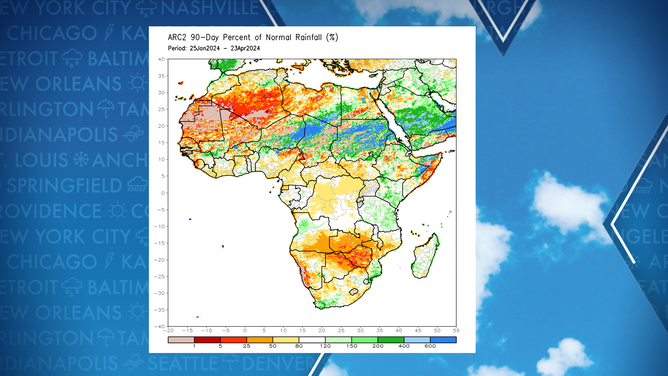
Estimated precipitation across Africa so far in 2024.
(NOAA)
